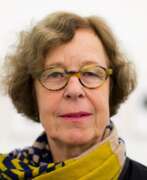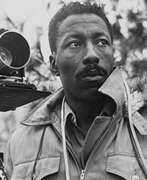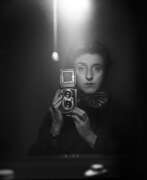Photojournalism Black & white photo


Margaret Bourke-White was an American photographer and photojournalist. She studied photography at the Clarence H. White School of Photography. White, where she developed her trademark style using dramatic angles and strong contrasts of light and shadow.
Burke-White was one of the first women photographers to work for Life magazine, and her images became synonymous with the magazine's coverage of major world events such as World War II and the Korean War. She was also the first woman photographer to work in war zones during World War II, where she captured powerful images of warfare and its impact on civilians.
In addition to war photography, Bourke-White also documented the Great Depression in the United States and was one of the few photographers to gain access to the Soviet Union in the 1930s where she documented Soviet industrialization and the lives of ordinary people.
Bourke-White's work was known for its powerful impact and stark realism. She often risked her safety to get the perfect shot and her images continue to inspire photographers today. She published several books of her work, including 'Eyes on Russia' and 'Dear Fatherland, Rest in Peace'.
Bourke-White left behind a legacy as one of the greatest photojournalists of the 20th century.


Robert Capa is a Hungarian-American photographer and photojournalist. He is considered one of the greatest war photographers of all time, known for his dramatic images of combat and conflict. Cornell Capa's older brother and a classic of documentary photography.
Capa began his career as a photographer in the early 1930s and soon became known for his coverage of the Spanish Civil War. He went on to cover many major conflicts, including World War II, the First Indochinese War and the Arab-Israeli War.
One of Robert Capa's most famous photographs is Falling Soldier, taken during the Spanish Civil War. The photo depicts a Republican soldier as he is shot and falls to his death. The authenticity of the photograph has been the subject of controversy for many years, but it remains an iconic image of war photography.
Capa also co-founded Magnum Photos, which was established in 1947 as a cooperative for independent photographers. Since then Magnum Photos has become one of the most prestigious and influential photo agencies in the world.
Capa died in 1954 while covering the First Indochina War, stepping on a mine. His legacy as a war photographer and photojournalist continues to inspire generations of photographers and his work remains an important part of photographic history.


Cornell Capa is an American photographer, photojournalist and founder of the International Center of Photography (ICP) in New York, the younger brother of the famous war correspondent Robert Capa.
Cornell Capa was known for his humanistic approach to photography, often capturing the lives and struggles of ordinary people. Throughout his career, he covered many important events, including the Spanish Civil War, World War II and the Vietnam War. Capa also photographed many famous people including John F. Kennedy, Marilyn Monroe and Pablo Picasso.
In 1974, Cornell Capa founded ICP, which has since become one of the world's leading photography education and exhibition institutions. The ICP's mission is to promote the understanding and appreciation of photography as an art form as well as a means of communication and social change.
Throughout his career Capa has received numerous awards and honours, including the National Medal of Arts in 1988. His photographs continue to be exhibited in galleries and museums around the world and his legacy lives on through ICP.


Edward Quinn is an Irish photographer famous for his portraits of celebrities and artists.
Edward Quinn began his career as a photojournalist, covering events such as the Spanish Civil War and the Second World War. In the 1950s he moved to the French Riviera and began photographing the rich and famous — Pablo Picasso, Brigitte Bardot, Grace Kelly, Max Ernst, Alexander Calder, Francis Bacon, Salvador Dali, Graham Sutherland, David Hockney.
Quinn's photographs are noted for their naturalness and spontaneity. He had a talent for capturing his subjects in inconspicuous moments and revealing their true essence. His portraits often show his subjects relaxed and at ease, as if they were unaware of the camera's presence.
In addition to photography, Quinn was also a writer and filmmaker. He wrote several books about the French Riviera and made a documentary about Pablo Picasso.


Rainer W. Schlegelmilch is a German motorsport photographer and photojournalist.
He studied at the Bavarian State College of Photography in Munich and already presented his work from motor racing at his graduation in 1962. Since then, this sport has been the main subject of Schlegelmilch's work. In 1964 he opened his own studio in Frankfurt for photo design and advertising photography.
The series of photographs of Formula One and FIA championships, which Schlegelmilch began in 1962, represent one of the most extensive collections of photographic material in the history of motor racing. His archive contains more than 600,000 images, which were black and white until 1970 and then color.
Schlegelmilch has published some 40 illustrated books on motorsport and calendars from various racing series, and has participated in exhibitions around the world. For his unique skill he is called "the eye of Formula 1", and Bernie Ecclestone many years ago gave him a press pass valid until the end of his life. Brands such as Ferrari, Porsche, BMW, Mercedes and Aston Martin have used his work for luxury publications.


Dayanita Singh is an Indian photographer whose primary format is the book. She has published fourteen books.
Singh's art reflects and expands on the ways in which people relate to photographic images. Her later works, drawn from her extensive photographic oeuvre, are a series of mobile museums allowing her images to be endlessly edited, sequenced, archived and displayed. Stemming from her interest in the archive, the museums present her photographs as interconnected bodies of work that are full of both poetic and narrative possibilities.

















































